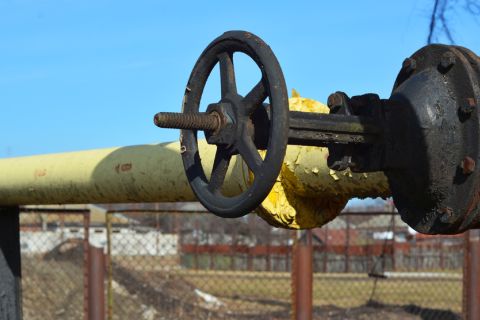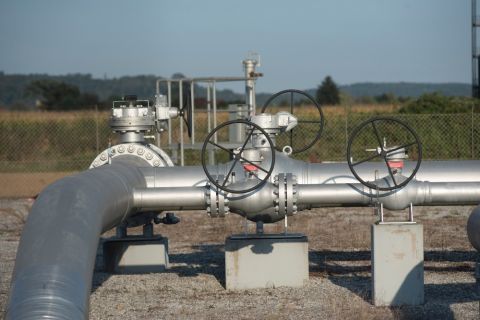Pemex is today the fifth largest oil producer in the world, producing more than 2.56 MMb/d with 1.8 MMb/d of that coming from offshore, and it’s the third biggest exporter of crude to the US. Mexico itself has an estimated 54.7 Bboe of prospective resources, according to Pemex, with 48% of those resources located in the deep waters of the Gulf of Mexico (GoM).
Despite this record and undoubted reserves potential, the company has long been aware of doubts over its ability to overcome a production challenge that was essentially ignored until the start of this millennium while it relied upon returns from giant but steadily diminishing offshore fields such as Cantarell and Ku-Maloob-Zaap.
Reality struck in 2003, when both fields peaked (with Cantarell producing just more than 2.1 MMb/d of oil) and then experienced huge falls in output (a decline of more than 70%) before frantic EOR efforts started to slow and eventually stabilize the production decline to its current level. Cantarell, for example, saw its production fall by only 3% in 2009, 1.36% the following year, 1.16% in 2011, and just 0.17% in 2012 (to around 408,000 b/d), representing a clear sign that Pemex’s EOR efforts have had a very real impact in arresting the alarming decline.
Government reforms
However, these older fields will continue their inevitable downward spiral, and Pemex knows it. So does Mexican President Enrique Pena Nieto; hence his proposed energy reforms. These are aimed at luring private investment into the oil and gas (and electricity) sectors with profit-sharing contracts and proposed reductions in the current heavy taxation burden that sits on Pemex’s shoulders. The proposed (and still highly controversial in Mexico) fiscal reforms are part of Nieto’s plans to wean the country’s government off its huge dependence on the state oil monopoly’s aging fields for a major share of its tax revenues – currently contributing approximately 34% to the government’s total federal income.
If approved and brought into effect as proposed by Nieto, by January 2015 this more flexible regime would free up Pemex to invest more of its own revenue to exploit new and mature fields.
This “new world” was outlined by two of the company’s executives tasked with finding and exploiting the company’s offshore reserves: Guillermo Mora, regional studies manager at Pemex; and Francisco Flamenco, deepwater projects design manager at the helm of the company’s first deepwater GoM development, Lakach.
This flagship subsea-toshore project is at the vanguard of its strategic plans to improve its deepwater credentials and become a recognized world-class offshore player. “This is our first deepwater project, which since last year has been under the control of our company’s new field development section, formed for Lakach and others,” said Flamenco during a presentation at the SPE Offshore Europe event in Aberdeen, Scotland.
Pemex’s presence at this high-profile event, where the company mapped out its future vision for its offshore sector, was a very public statement of intent.
Learning on Lakach
Lakach is a deepwater wet gas field but will be a relatively straightforward project for Pemex to cut its teeth on. “Lakach is simple, so it is very much a learning project for us,” Flamenco said.
The field lies 98 km (61 miles) southeast of Veracruz and was discovered in 2007 in 988 m (3,241 ft) of water. With around 24 Bcm (850 Bcf) expected to be produced from the field via seven production wells with horizontal production trees, first gas is planned to flow by 2016 and peak at around 11 MMcm/d (400 MMcf/d), according to Flamenco. “Right now we are drilling the first development well, and we have a dedicated rig on the drilling campaign through this year and next.”
The company also has brought in some experienced deepwater contractors to help it on its way, with Doris-Petrofac carrying out technical assistance and supervision work on Lakach while Halliburton is supplying drilling and drillstem testing services, according to Flamenco. Subsea players such as Aker Solutions, Cameron, and GE Vetco are working with the company on the project’s sub-sea production system, while others such as Saipem and Subsea 7 are in the mix for the subsea infrastructure, installation, and commissioning activity.
Although Lakach represents Pemex’s first deepwater development in the GoM, it is not the company’s first experience of deepwater activity. It has drilled 27 wildcat wells so far, gaining valuable experience and knowledge as it prepares the way for a largely deepwater-oriented future. Pemex specifies deep water as starting at a water depth of 500 m (1,640 ft).
“Pemex has decided to invest substantially in deepwater projects. We’re now doing a pre-FEED study on our large Kunah gas discovery, where we are selecting concepts, and next year we will be doing one on our Trion find, where we will be drilling a further appraisal well by the end of this year. We also have started to do some joint ventures with operators to work with us in deep water under the new framework,” said Flamenco, referring to existing technology collaboration agreements the company already has formed with several western players, including Shell, ExxonMobil, BP, and Petrobras.
He added that Kunah was being considered for development via a 14-MMcm/d (500-MMcf/d) floating production system. The gas would then be piped to shore, possibly using the Lakach pipeline infrastructure.
Regional prospectivity
Mora, with his wider regional remit for the GoM, highlighted the prospectivity of the area as a whole for Pemex. The company has “a complete plan for exploration covering the Perdido Fold Belt area and the Salina Del Bravo subsalt province because we want to look for light oil if possible,” he said.
The company already has found nearly 500 MMbbl of light oil in the Perdido and Salina Del Bravo plays in its northeastern offshore sector, making deep and ultradeepwater discoveries including Maximino in a water depth of 2,900 m (9,515 ft) earlier this year and Supremus and Trion last year. These fields will supply production to an eventual development cluster or “pole of development” in the Perdido area, where Pemex has 11 potential development poles in total on the drawing board. Trion is the first of those and is on course for a pre-FEED study next year.
Mora said the prospective resources for the northeastern area are estimated by Pemex at around 8 Bboe, while total reserves in the company’s GoM waters could be 29 Bboe.
The company’s exploration activity in its southwestern waters is more focused on firming up the gas potential, which has led to finds such as Kunah, Lakach, and Piklich, with Kunah being the largest.
Pemex also is under way with development activity on its heavy oil Ayatsil-Tekel field in the Bay of Campeche, where it is planning to use a US $1 billion newbuild FPSO vessel with a production capacity of up to 300,000 b/d linked to four surrounding fixed production platforms.
Pemex on a mission
Pemex is a company on a mission to turn around its fortunes and catch up fast. It has managed to achieve a proven reserves replacement rate of more than 100% during the past two years, investing $2.5 billion via the drillbit on exploration in 2012 and an estimated $2.6 billion forecast for the whole of 2013. The company also is pushing hard on the evaluation and eventual exploitation of its undoubted deepwater reserves in the GoM. This is in parallel with its initial development of pioneering fields such as Lakach, aimed at closing the technology gap and enhancing the company’s own internal knowledge and expertise.
“Lakach will accelerate our knowledge to carry out this subsea tieback to shore. It is a very good exercise for us as a company,” Flamenco said.
Recommended Reading
Apollo Buys Out New Fortress Energy’s 20% Stake in LNG Firm Energos
2024-02-15 - New Fortress Energy will sell its 20% stake in Energos Infrastructure, created by the company and Apollo, but maintain charters with LNG vessels.
Summit Midstream Sells Utica Interests to MPLX for $625MM
2024-03-22 - Summit Midstream is selling Utica assets to MPLX, which include a natural gas and condensate pipeline network and storage.
Enbridge Sells Off NGL Pipeline, Assets to Pembina for $2.9B
2024-04-01 - With its deal to buy Enbridge’s NGL assets closed, Canada's Pembina Pipeline raised EBITDA guidance for 2024.
Hess Midstream Announces 10 Million Share Secondary Offering
2024-02-07 - Global Infrastructure Partners, a Hess Midstream affiliate, will act as the selling shareholder and Hess Midstream will not receive proceeds from the public offering of shares.
Tallgrass Energy, Bridger Starts Open Season for Pony Express Pipeline
2024-01-25 - Tallgrass Energy and Bridger Pipeline are looking for customers for the Northwest portion of the Pony Express line in Wyoming and Colorado.





